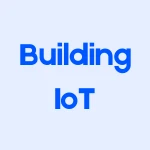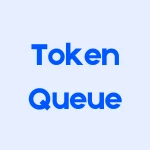
Visitor Management System: Streamline Check-Ins with Self-Service
A visitor management system with self-service check-in is an ideal solution when you want to eliminate operator dependency in the visitor process.
It becomes especially useful in high-traffic premises where front desk personnel may struggle to handle the volume efficiently. Instead of allocating additional resources to manage the inflow, which can be counterproductive, automation offers a smarter approach.
Since our focus is on streamlining processes through automation, we emphasize solutions that deliver real results. In this blog, we’ll explore a specific type of visitor management system—one that fully automates check-ins and check-outs without requiring an operator, even in environments with heavy visitor traffic.
A Visitor Self-Entry Kiosk
A self-entry kiosk is a visitor management system designed for reception areas that operate without an operator.
It is especially useful in high-traffic environments where manually managing visitor entries is inefficient and resource-intensive.
Placed at the entrance, the kiosk allows visitors to enter their details before accessing the premises. The system then verifies their identity and, upon successful verification, issues a visitor slip, which serves as both an entry and exit pass.
“ Placed at the entrance, the kiosk allows visitors to enter their details before accessing the premises. ”
Advantages of a Visitor Self-Check-In System
A self-entry visitor system offers several key benefits:
1. Efficient Handling of High Visitor Volume
When dealing with a large number of visitors daily, traditional pen-and-paper entries become impractical. The self-entry system automates the process, ensuring accurate and organized visitor data.
2. Optimized Resource Allocation
With a self-check-in system, there's no need to assign staff to oversee visitor registration. Visitors complete the process independently, allowing front desk personnel to focus on more critical tasks.
3. Built-In Visitor Verification
The system ensures that visitors verify their identity before generating a pass, eliminating the need for manual validation.
4. Automated Pass Generation
Once verification is complete, the system issues a visitor pass—either a printed slip or a digital pass—serving as an entry and exit credential.
5. Real-Time Notifications
The system can send alerts via email, SMS, or other channels, notifying hosts or relevant personnel of a visitor’s arrival.
6. Centralized Dashboard for Monitoring
All visitor data is stored in a unified dashboard, regardless of the number of self-entry kiosks installed, allowing seamless monitoring of entries and exits.
7. Detailed Reports & Analytics
The system logs visitor data and generates comprehensive reports, helping administrators track trends and take informed actions.
8. Integration with Access Control
The self-check-in system can work alongside or be integrated with existing access control solutions, ensuring that only authorized individuals gain entry.
9. Customizable to Specific Needs
Organizations can tailor the system to match their requirements, from branding and visitor information fields to language preferences.
A self-entry visitor kiosk is a useful visitor management solution that streamlines visitor management, enhances security, and improves operational efficiency, making it a valuable addition to modern workplaces.






